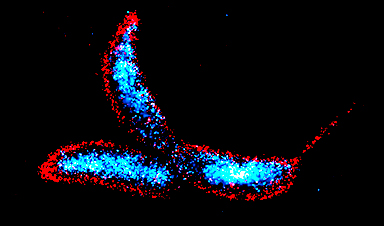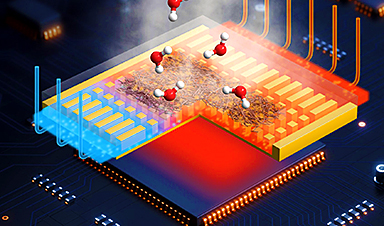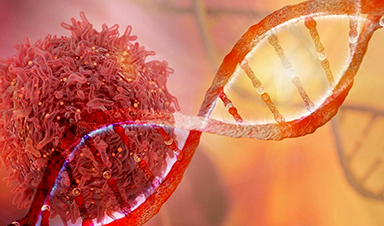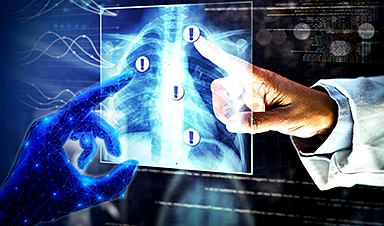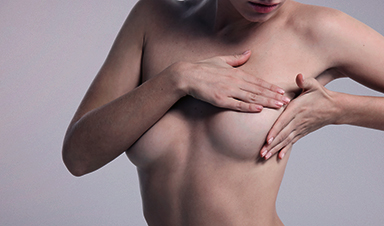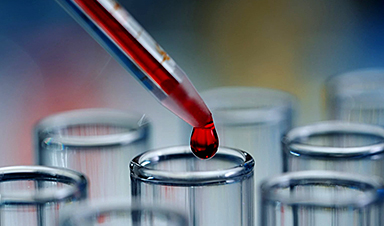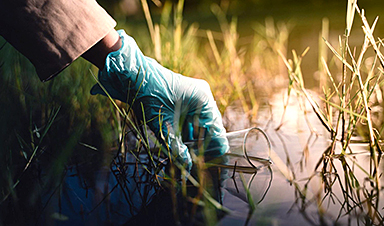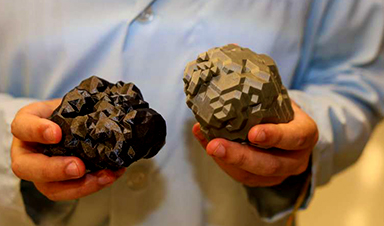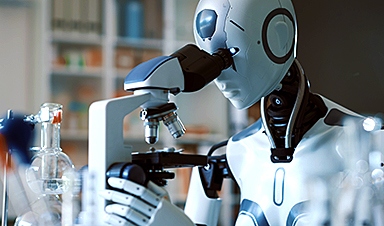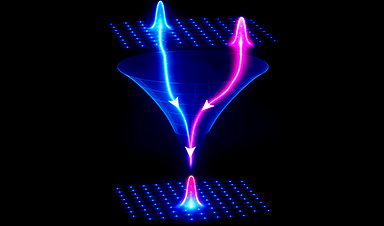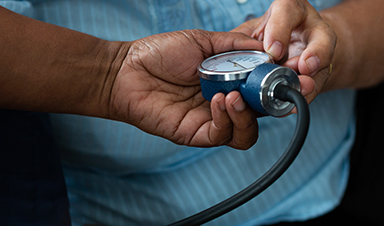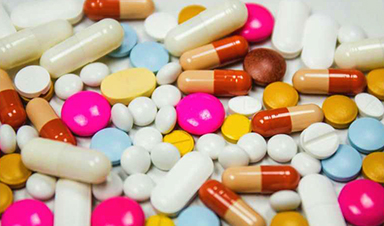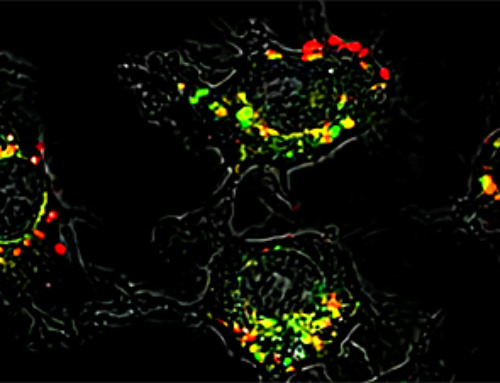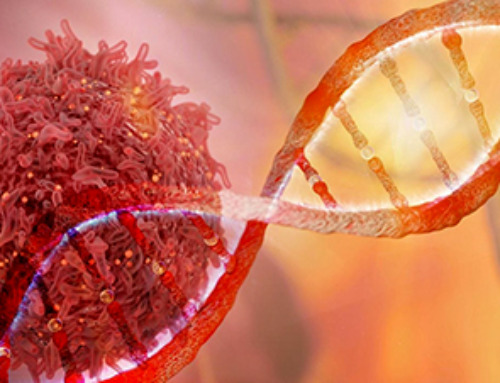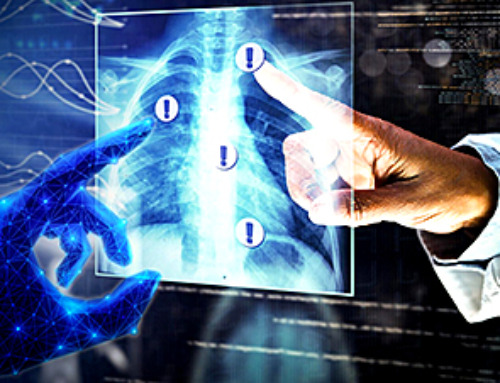How one regulatory protein acts as a multi-tool of bacterial cell wall remodeling.
For bacterial cells to grow and divide, their cell walls need continual remodeling. This process requires a careful balance of lytic enzymes and peptidoglycan production. A team of researchers headed by Martin Thanbichler discovered that a central regulator can control completely different classes of autolysins. Since many antibiotics attack the bacterial cell wall, this discovery could pave the way for new treatment methods against bacterial infections.
During evolution, cells have developed a wide range of strategies to strengthen their envelope against internal osmotic pressure, thus allowing them to grow in a variety of different environments. Most bacterial species synthesize a semi-rigid cell wall surrounding the cytoplasmic membrane, whose main component, peptidoglycan, forms a dense meshwork that encases the cell.
In addition to its protective role, the cell wall also serves as a means to generate specific cell shapes, such as spheres, rods, or spirals, thus facilitating motility, surface colonization, and pathogenicity.
The research team led by Martin Thanbichler, Max Planck Fellow at the Max Planck Institute for Terrestrial Microbiology and Professor of Microbiology at the University of Marburg, has set out to unravel the composition and function of the autolytic machinery. Their studies focus on the crescent-shaped bacterium Caulobacter crescentus, which is found in freshwater environments and widely used as a model organism to study fundamental cellular processes in bacteria.
According to Thanbichler, studying the function of autolysins has been a challenging task. "While we know a lot about the synthetic machinery, the autolysins proved to be a tough nut to crack." Maria Billini, a postdoctoral researcher in Thanbichler's team, adds: "Bacteria usually harbor many types of autolysins from different enzyme families with different targets. This means that these proteins are highly redundant, and the deletion of individual autolysin genes often has little effect on cell morphology and growth."
Versatile regulator
Analysis of potential autolysin regulators by co-immunoprecipitation screening and in vitro protein-protein interaction assays has revealed that a factor called DipM plays a pivotal role in bacterial cell wall remodeling. This key regulator, a soluble periplasmic protein, surprisingly interacts with several classes of autolysins as well as a cell division factor, showing a promiscuity that was previously unknown for this type of regulator.
DipM was able to stimulate the activity of two peptidoglycan-cleaving enzymes with completely different activities and folding, making it the first identified regulator that can control two classes of autolysins. Notably, the results also indicate that DipM uses a single interface to interact with its various targets.
"Disruption of DipM leads to the loss of regulation at various points of the cell wall remodeling and division process and ultimately kills the cell," says doctoral student Adrian Izquierdo Martinez, first author of the study. "Its proper function as a coordinator of autolysin activity is thus critical for proper cell shape maintenance and cell division in C. crescentus."
The comprehensive characterization of DipM revealed a novel interaction network, including a self-reinforcing loop that connects lytic transglycosylases and possibly other autolysins to the core of the cell division apparatus of C. crescentus, and very likely also other bacteria. Thus, DipM coordinates a complex autolysin network whose topology greatly differs from that of previously studied autolysin systems. Martin Thanbichler points out: "The study of such multi-enzyme regulators, whose malfunction affects several cell wall-related processes at the same time, not only helps us to understand how the cell wall responds to changes in the cell or the environment. It can also contribute to the development of new therapeutic strategies that combat bacteria by disrupting several autolytic pathways simultaneously."
Reference: "DipM controls multiple autolysins and mediates a regulatory feedback loop promoting cell constriction in Caulobacter crescentus" by Adrian Izquierdo-Martinez, Maria Billini, Vega Miguel-Ruano, Rogelio Hernández-Tamayo, Pia Richter, Jacob Biboy, María T. Batuecas, Timo Glatter, Waldemar Vollmer, Peter L. Graumann, Juan A. Hermoso, and Martin Thanbichler, 11 July 2023, Nature Communications.
DOI: 10.1038/s41467-023-39783-w
News
AI Is Overheating. This New Technology Could Be the Fix
Engineers have developed a passive evaporative cooling membrane that dramatically improves heat removal for electronics and data centers Engineers at the University of California San Diego have created an innovative cooling system designed to greatly enhance [...]
New nanomedicine wipes out leukemia in animal study
In a promising advance for cancer treatment, Northwestern University scientists have re-engineered the molecular structure of a common chemotherapy drug, making it dramatically more soluble and effective and less toxic. In the new study, [...]
Mystery Solved: Scientists Find Cause for Unexplained, Deadly Diseases
A study reveals that a protein called RPA is essential for maintaining chromosome stability by stimulating telomerase. New findings from the University of Wisconsin-Madison suggest that problems with a key protein that helps preserve chromosome stability [...]
Nanotech Blocks Infection and Speed Up Chronic Wound Recovery
A new nanotech-based formulation using quercetin and omega-3 fatty acids shows promise in halting bacterial biofilms and boosting skin cell repair. Scientists have developed a nanotechnology-based treatment to fight bacterial biofilms in wound infections. The [...]
Researchers propose five key questions for effective adoption of AI in clinical practice
While Artificial Intelligence (AI) can be a powerful tool that physicians can use to help diagnose their patients and has great potential to improve accuracy, efficiency and patient safety, it has its drawbacks. It [...]
Advancements and clinical translation of intelligent nanodrugs for breast cancer treatment
A comprehensive review in "Biofunct. Mater." meticulously details the most recent advancements and clinical translation of intelligent nanodrugs for breast cancer treatment. This paper presents an exhaustive overview of subtype-specific nanostrategies, the clinical benefits [...]
It’s Not “All in Your Head”: Scientists Develop Revolutionary Blood Test for Chronic Fatigue Syndrome
A 96% accurate blood test for ME/CFS could transform diagnosis and pave the way for future long COVID detection. Researchers from the University of East Anglia and Oxford Biodynamics have created a highly accurate [...]
How Far Can the Body Go? Scientists Find the Ultimate Limit of Human Endurance
Even the most elite endurance athletes can’t outrun biology. A new study finds that humans hit a metabolic ceiling at about 2.5 times their resting energy burn. When ultra-runners take on races that last [...]
World’s Rivers “Overdosing” on Human Antibiotics, Study Finds
Researchers estimate that approximately 8,500 tons of antibiotics enter river systems each year after passing through the human body and wastewater treatment processes. Rivers spanning millions of kilometers across the globe are contaminated with [...]
Yale Scientists Solve a Century-Old Brain Wave Mystery
Yale scientists traced gamma brain waves to thalamus-cortex interactions. The discovery could reveal how brain rhythms shape perception and disease. For more than a century, scientists have observed rhythmic waves of synchronized neuronal activity [...]
Can introducing peanuts early prevent allergies? Real-world data confirms it helps
New evidence from a large U.S. primary care network shows that early peanut introduction, endorsed in 2015 and 2017 guidelines, was followed by a marked decline in clinician-diagnosed peanut and overall food allergies among [...]
Nanoparticle blueprints reveal path to smarter medicines
Lipid nanoparticles (LNPs) are the delivery vehicles of modern medicine, carrying cancer drugs, gene therapies and vaccines into cells. Until recently, many scientists assumed that all LNPs followed more or less the same blueprint, [...]
How nanomedicine and AI are teaming up to tackle neurodegenerative diseases
When I first realized the scale of the challenge posed by neurodegenerative diseases, such as Alzheimer's, Parkinson's disease and amyotrophic lateral sclerosis (ALS), I felt simultaneously humbled and motivated. These disorders are not caused [...]
Self-Organizing Light Could Transform Computing and Communications
USC engineers have demonstrated a new kind of optical device that lets light organize its own route using the principles of thermodynamics. Instead of relying on switches or digital control, the light finds its own [...]
Groundbreaking New Way of Measuring Blood Pressure Could Save Thousands of Lives
A new method that improves the accuracy of interpreting blood pressure measurements taken at the ankle could be vital for individuals who are unable to have their blood pressure measured on the arm. A newly developed [...]
Scientist tackles key roadblock for AI in drug discovery
The drug development pipeline is a costly and lengthy process. Identifying high-quality "hit" compounds—those with high potency, selectivity, and favorable metabolic properties—at the earliest stages is important for reducing cost and accelerating the path [...]
